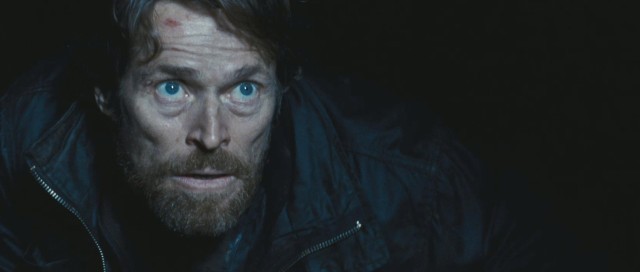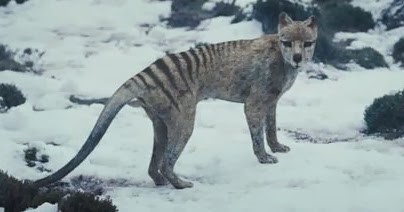The Hunter is a 2011 Australian drama film directed by Daniel Nettheim adopted from Julia Leigh’s novel. The chosen scene illustrates the parallels of a lone hunter named Martin and a supposedly extinct Tasmanian tiger, which creates an emotional crescendo and reveals Martin’s abrupt change in stance. The presented animal was subject to human caused extinction in real life, functioning as a mysterious and much sought-after animal in the film (figure 1).

The scene illustrates the parallels of Martin and the Tasmanian Tiger through powerful and intimate eye contact as Martin is seen looking up at the Tasmanian Tiger which appears at the cave’s entrance. The climax rapidly builds as neither the audience nor Martin himself were certain of the existence of the animal. The camera switches to the Tasmanian tiger showing him as if the audience sees through Martin’s eyes. The camera switches to a close-up of Martin’s face dominated by his expressive eyes which allow the viewers to look into the character’s interior. His strong facial expression, rigidity and eyes which are the only bright spots in the frame reveal his amazement (figure 2).

Thus, this scene assembles a perceptible intimacy between the hunter and his elusive prey as the hunter does not seem to transfer a feeling of superiority which normally is expected from a hunter intending to hunt down its prey. Rather, through intense eye contact the Tasmanian tiger and Martin appear to be on par with each other.
An emotional crescendo is created since the scene encompasses the uncertainty of Martin’s thoughts and actions and adjusted cinematography and sound design. The intriguing extra-diegetic sound is combined with intra-diegetic sounds of Martin’s cautious motions pulling the audience right into the moment in which Martin has the chance of shooting the last Tasmanian tiger. What will Martin do? The uncertainty of Martin’s thoughts caused by the lack of speech and quickly intensified through the silenced sound design leaves the audience tantalized. The camera focuses on the Tasmanian tiger that again seems to look Martin and the audience right into the eyes (figure 3) appealing to the viewers’ emotions once again through a close-up of eye contact.

Furthermore, the scene reveals Martin’s abrupt change in stance regarding the last Tasmanian tiger. Him deciding to shoot and burn the Tasmanian tiger instead of executing his job and captivating its DNA illustrates a profound change in his stance. Throughout the film, his emotionlessness and assassin like characteristics are strongly apparent. This scene however shows his change in stance regarding his job and the influence of human-animal relationship uncovering his emotions which question the morality of his employer. This interior change is visualized through close-ups of Martin´s face revealing a profound conglomeration of emotions. His bright eyes are frequently in the focus of the camera frame allowing the viewers entrance to his feelings which was sealed prior to this scene. Eventually, in this scene close-ups of Martin’s eyes and constant eye-contact with the animal serve as dominant and effective method to communicate with the audience.